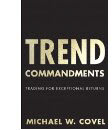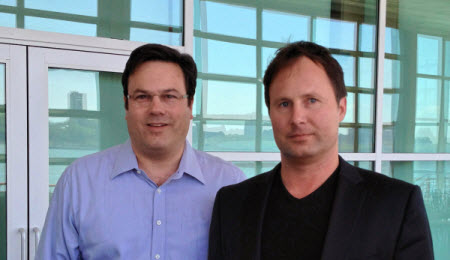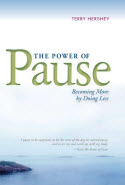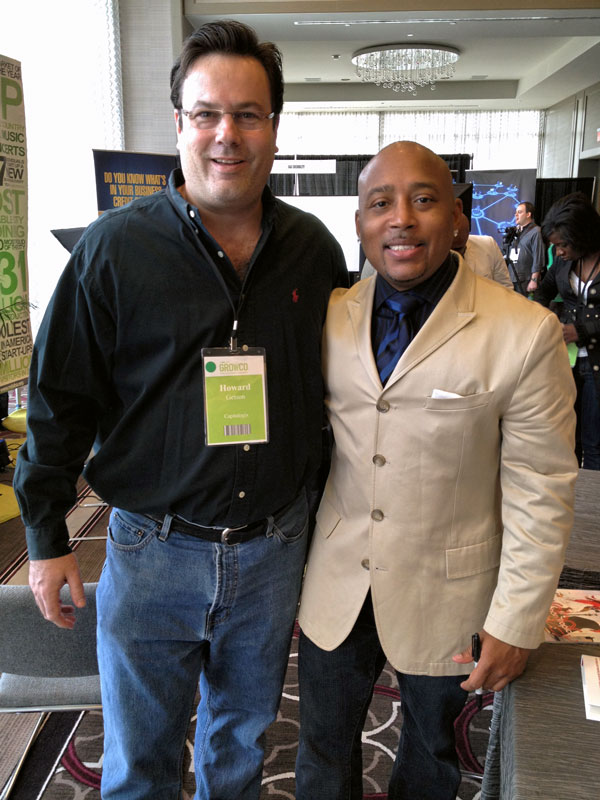Michael Covel was the keynote speaker at this year's Market Technicians Association Annual Symposium.
Covel has made a name for himself as a chronicler of the Turtle Trading experiment and an outspoken proponent of trend following. Here is a photo of him and me at the Symposium.
Truth be told, I often sit through presentations at a trading conference feeling skeptical, and looking for an idea that rings true or at least seems worth investigating further.
This was much better than that.
Covel claims that market profit is about the right mentoring and practice, not genetic gifts, inborn talents, or Asperger's memory brilliance. You simply need a winning philosophy and strategy, backed by proven positive results that you can execute.
Unlike some industry experts who hint at elusive secrets, Covel's unabashedly open about what he believes works and the things that he's learned from winning traders. He also sprinkles in wisdom from the ages, like this quote from the ancient Greek trend follower, Epictetus.
Do not strive for things occurring to occur as you wish, but wish the things occurring as they occur, and you will flow well.
The audience at an MTA event is filled with an impressive group of people … you'll meet portfolio managers, strategists, analysts, quants, and traders who rely on technical analysis. Talk of oscillators, histograms and regression testing fills the air. So, it was refreshing to hear Covel challenge the room. Covel loves to poke technicians who talk about quant trading; he claims that systematic trend following is the only quant strategy that actually works.
He said that what he does is real technical analysis because despite what anyone else thinks, he's skeptical that any of the complex strategies being discussed consistently beats the technique he's talking about. The proof, he says, is in the evidence. In this case, it's the detailed trading records of dozens of systematic trend traders who have produced consistent results that dramatically outperform the markets, year-in-and-year-out for decades.
Simple Is Often Better.
If you asked someone who builds trading systems to describe a trading system, they'd probably focus on inputs and technique (e.g., what indicators does it use; is it a momentum strategy; does it seek to profit from artbitrage, reversion to the mean; does it use a simple crossover technique?). In contrast, Covel starts with a proverb:
If you must play, decide upon three things at the start: the rules of the game, the stakes, and quitting time.
Going a little deeper, Covel says a system should confidently deal with these questions.
- What market do you buy or sell at any time?
- How much of a market do you buy or sell at any time?
- When do you buy or sell a market?
- When do you get out of a losing position?
- When do you get out of a winning position?
However, he cautions that trend following starts with knowing when to do nothing. If the market is screaming like a spoiled brat … Step to the side. That’s your first play. Cash is a legitimate position.
Learning More.
Covel is an engaging speaker and writer. In addition to the keynote, I had an opportunity to sit down with him and have a real conversation. I'm happy to say that he has a terrific grasp on trading, traders, and an interesting perspective on what works.
 Covel has a new book called Trend Commandments: Trading for Exceptional Returns. He claims it is for those who know deep down that there is a real way to make money in the markets, but just do not know how yet.
Covel has a new book called Trend Commandments: Trading for Exceptional Returns. He claims it is for those who know deep down that there is a real way to make money in the markets, but just do not know how yet.
As a result of our conversation, I bought a copy. Since I had already read several of his other books, including Trend Following and The Complete Turtle Trader, I didn't expect much new information. However, just as he promised, this book has a different tone and is chock-full of insights and tradable ideas.
If your're curious, here's my post on his earlier books.
Covel offers an interesting collection of Podcasts. Click here to check them out.
- Do not run with the pack.
- Collaborate with meaningful people.
- Be guided by beauty. It is a beautiful thing to solve problems and do things right.
- Do not give up.
- Hope for some good luck.
Sounds good.








